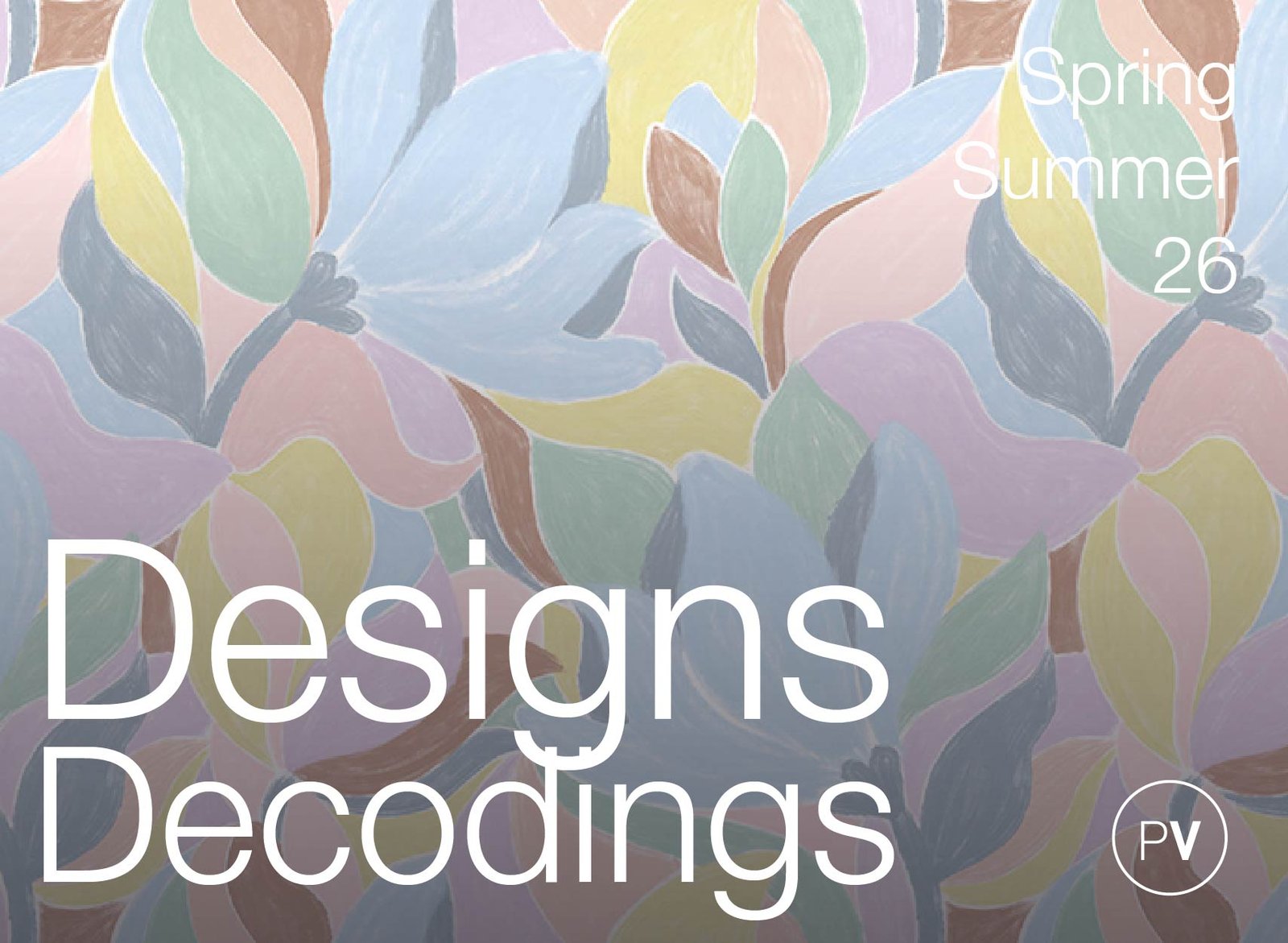In the face of profound global changes, the Spring-Summer 2026 season is embracing three core themes: Re-fresh, Re-store, and Re-set. These themes are driving textile design towards innovations that address climate challenges through industrial processes and material advancements, revive traditional practices for soil health, and encourage a focus on present realities and bodily awareness. The season’s textile designs are marked by reimagined botanical motifs and a strong return to artisanal techniques and folkloric influences.
Botanical patterns are taking centre stage, with vibrant floral prints designed to awaken the senses. These are not traditional floral arrangements, but rather “Disrupted Gardens of Eden,” infused with human and digital interventions. Expect to see dreamy, almost hallucinatory floral chaos featuring finger smudges, solarized effects, and layered compositions, defying conventional optical principles with free layering of sharp and blurred elements. This trend is exemplified by designs from Longina Phillips in Australia.
A bolder, “Punk Floral” trend offers another interpretation of botanical motifs, blending romance with a wild, untamed spirit. These designs emphasize spontaneity and impulsiveness, contrasting delicate flowers with expressive, bold strokes. Darker colour palettes enhance the dramatic intensity of these floral compositions, as seen in the work of WQ Print Studio from Pakistan and Moonshake Studio from the US.
In contrast, a “Botanical Idyll” trend promotes a more patient and contemplative approach to nature. Botanical patterns here are rendered with harmony and precision, utilizing traditional techniques such as graphite, coloured pencils, and watercolour in vintage-inspired sketches that appear suspended in time. Bolddesign Studio from Portugal and WQ Print Studio from Pakistan showcase this trend. Elena Romero from Spain and Myriam de Faÿ from France also contribute to this style, alongside Studio Paraizo from Brazil.
“Falling Petals” embodies a soft and romantic aesthetic, featuring gentle drifts of petals in pastel and neutral shades. This trend is a pure celebration of floral forms, without wildness, creating delicate and undulating compositions. Techniques such as pastels and felts highlight charming imperfections, offering a poetic, human interpretation of nature. Designers like Mari Tsuji and Claire Méha from France, Bureaux Bo from GE, and Amélie Broddes from France are among those exploring this delicate style.
Beyond traditional flora, “Plantasia” introduces a hybrid bestiary. This trend juxtaposes elements of nature, merging wild animals with bark and foliage in surprising and sensuous fusions, often in warm tones. Minerals and shell-like textures are also incorporated, adding another layer of complexity. Mari Tsuji from France, Bolddesign Studio from Portugal, Season Paper Studio from France, and Moonshake Studio from the US are exploring these unique plant-animal combinations.
“Old Wardrobe” patterns bring a passionate reinterpretation of ancient textiles, featuring meticulously crafted designs. Ultra-fine lines evoke the spirit of upholstery, tapestries, and wallpaper from bygone eras. Ikigaïbloom from France and Estudio Rocha from Brazil are creating designs in this vein. Studio Paraizo from Brazil and Alicia Villodres Patterns from Spain also contribute to this trend, drawing inspiration from historical textiles.
Finally, the “Artisanal Stitch” trend takes an embroidery-inspired approach to prints, celebrating ancestral craftsmanship. Surfaces are embellished with colourful floral motifs, blurring the lines between photographic embroidery and trompe-l’œil cross-stitch effects, adding a tangible materiality to the prints. Estudio Rocha and Lúdico Estampas from Brazil, Longina Phillips from Australia, and Aqui Design E.U from Australia present designs that capture this handcrafted embroidery aesthetic.
Explore further insights into the Spring/Summer 26 season’s design directions by discovering more decodings online.

Leave a Reply